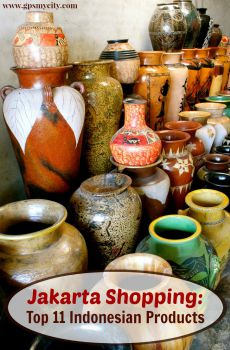
Bank Indonesia Museum, Jakarta
Bank Indonesia Museum in Jakarta's Old Town, established by Bank Indonesia, is housed in a historical building that boasts impressive architecture. It was originally the headquarters of the Netherlands Indies gulden, also known as De Javasche Bank, the central bank of the Dutch East Indies. When Indonesia gained independence in 1953, the bank became nationalized as Bank Indonesia.
The building that currently houses the museum was constructed in the early 18th century on the site of Batavia's Inner Hospital. It was abandoned in 1780 when the central hospital moved to Weltevreden. The original hospital building was demolished in the early 20th century, and a new building designed by Eduard Cuypers was constructed in its place. Cuypers was a renowned Dutch architect known for incorporating indigenous Indonesian elements into his designs. The building's front facade was completed in 1909 in Neo-Renaissance architecture with Javanese decorations integrated into its details. The inner court of the building underwent renovation in 1926, which resulted in the incorporation of Art Deco elements into the design.
The Bank Museum was inaugurated in 2009, after a series of renovations and improvements by local authorities. It presents Indonesia’s financial evolution, including its first contact with Europeans, the effects of Dutch colonization on financial life, and the machines used in the banking process. Visitors can view old typewriters, phones, telegraphs, ATMs, money counting machines, and computers, as well as admire gold bullions displayed in one of the museum’s rooms and enter the bank’s “secret” safe. Short movies highlight the changes suffered by the local currency along the way, while the banking jargon is explained on the walls of another room.
The building that currently houses the museum was constructed in the early 18th century on the site of Batavia's Inner Hospital. It was abandoned in 1780 when the central hospital moved to Weltevreden. The original hospital building was demolished in the early 20th century, and a new building designed by Eduard Cuypers was constructed in its place. Cuypers was a renowned Dutch architect known for incorporating indigenous Indonesian elements into his designs. The building's front facade was completed in 1909 in Neo-Renaissance architecture with Javanese decorations integrated into its details. The inner court of the building underwent renovation in 1926, which resulted in the incorporation of Art Deco elements into the design.
The Bank Museum was inaugurated in 2009, after a series of renovations and improvements by local authorities. It presents Indonesia’s financial evolution, including its first contact with Europeans, the effects of Dutch colonization on financial life, and the machines used in the banking process. Visitors can view old typewriters, phones, telegraphs, ATMs, money counting machines, and computers, as well as admire gold bullions displayed in one of the museum’s rooms and enter the bank’s “secret” safe. Short movies highlight the changes suffered by the local currency along the way, while the banking jargon is explained on the walls of another room.
Want to visit this sight? Check out these Self-Guided Walking Tours in Jakarta. Alternatively, you can download the mobile app "GPSmyCity: Walks in 1K+ Cities" from Apple App Store or Google Play Store. The app turns your mobile device to a personal tour guide and it works offline, so no data plan is needed when traveling abroad.
Bank Indonesia Museum on Map






Sight Name: Bank Indonesia Museum
Sight Location: Jakarta, Indonesia (See walking tours in Jakarta)
Sight Type: Museum/Gallery
Guide(s) Containing This Sight:
Sight Location: Jakarta, Indonesia (See walking tours in Jakarta)
Sight Type: Museum/Gallery
Guide(s) Containing This Sight:
Walking Tours in Jakarta, Indonesia
Create Your Own Walk in Jakarta
Creating your own self-guided walk in Jakarta is easy and fun. Choose the city attractions that you want to see and a walk route map will be created just for you. You can even set your hotel as the start point of the walk.
Jakarta's Colonial Buildings
Throughout the centuries, the European powers, particularly the Dutch who colonized Indonesia from the 1800s until 1945, left their mark on Jakarta. At one time known as Batavia, the de-facto capital of the Dutch East Indies, today Jakarta boasts a wealth of old-time structures, featuring a fascinating blend of European and Javanese design influences.
One of the most prominent areas to explore... view more
Tour Duration: 2 Hour(s)
Travel Distance: 2.7 Km or 1.7 Miles
One of the most prominent areas to explore... view more
Tour Duration: 2 Hour(s)
Travel Distance: 2.7 Km or 1.7 Miles
Jakarta Introduction Walking Tour
The capital of Indonesia, Jakarta, is a massive, fast-paced metropolis and a melting pot of cultures – Asian and European – that historically coexisted and imprinted their influence on the city's architecture, language, cuisine, and lifestyle. The local Istiqlal Mosque is the largest Islamic temple in Southeast Asia, while the Neo-Gothic Gereja Katedral, also known as the Jakarta... view more
Tour Duration: 2 Hour(s)
Travel Distance: 4.1 Km or 2.5 Miles
Tour Duration: 2 Hour(s)
Travel Distance: 4.1 Km or 2.5 Miles
Useful Travel Guides for Planning Your Trip
Jakarta Shopping Guide: Top 11 Indonesian Products
The world's largest Muslim-populated country, Indonesia is also a mecca for tourists, drawing millions each year to her thousands of volcanic islands scattered between the Pacific and Indian oceans. The country's ethnic diversity has given rise to the lavish and colorful arts and...
Indonesian Sweets and Pastries
Spread across an archipelago of islands accommodating hundreds of ethnicities speaking many different languages, Indonesia is a cluster of just as many culinary traditions. And just as any other Asian culinary, Indonesian cuisine can't be imagined without a dollop of sweetness. Some of the...




